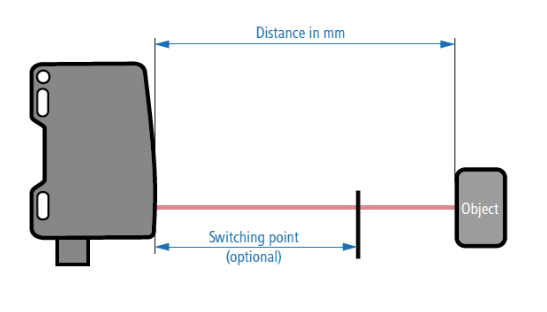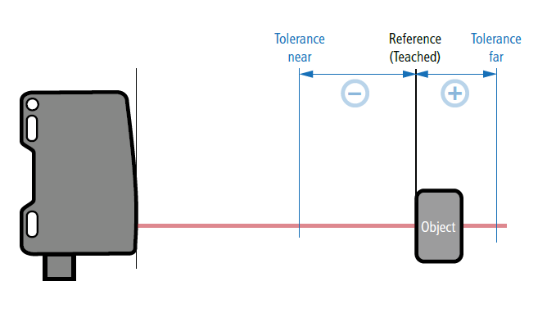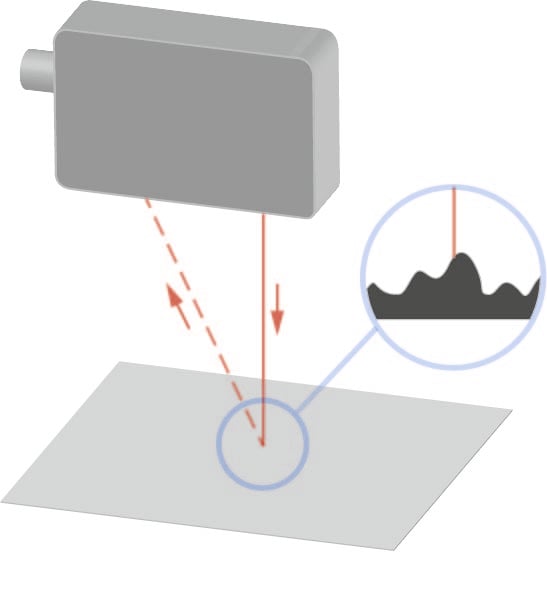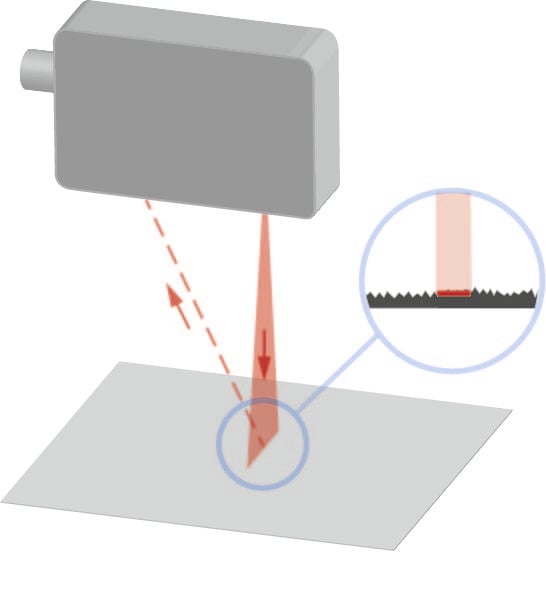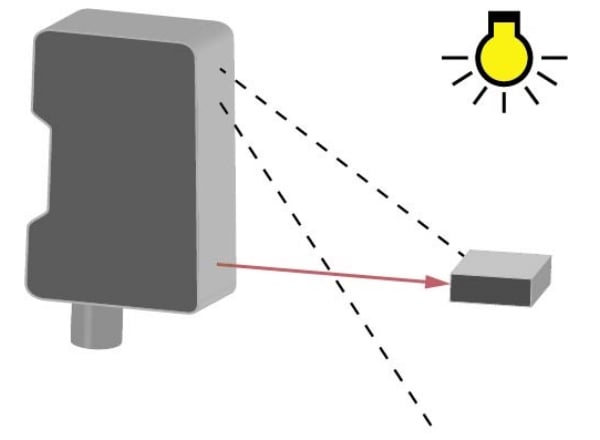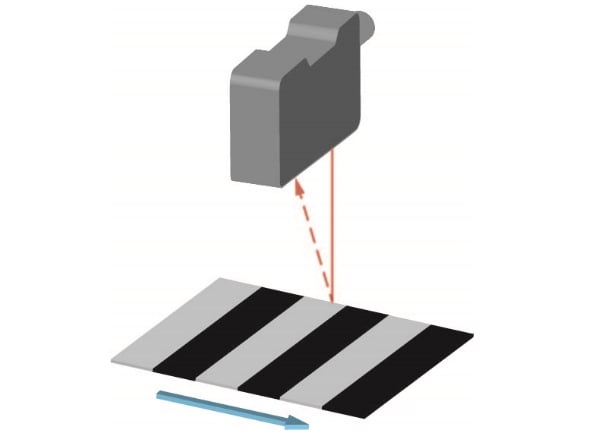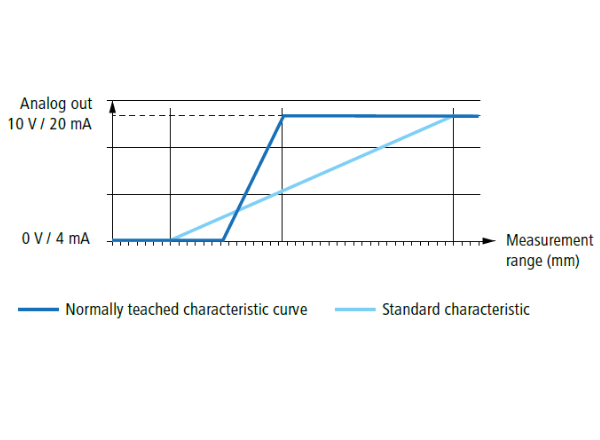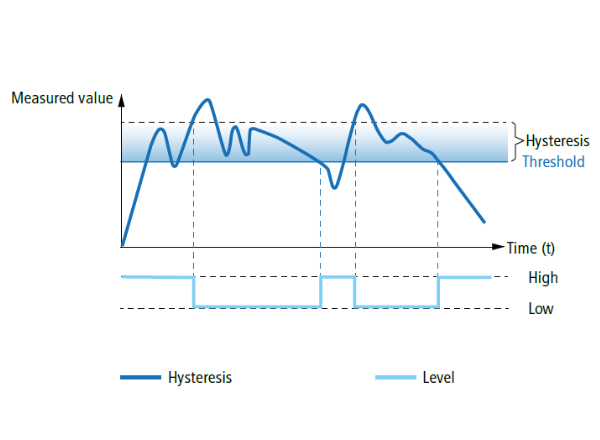Triangulation
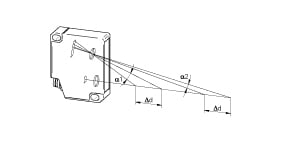
The distance measurement is based on the triangulation principle. The laser beam strikes the object as a small point. The receiver of the sensor (photodiode line) detects the position of this point. The angle of incidence changes according to the distance, and thereby the position of the laser point on the receiver. The photodiode line is read by an integrated microcontroller. The controller accurately calculates the angle from the light distribution on the photodiode line and then calculates the distance to the object from this. This distance is either issued at the serial port or converted into an output current proportional to the distance. The microcontroller guarantees a high degree of linearity and measuring precision. The combination of a photodiode line and a microcontroller permits interfering reflections to be suppressed and thereby provides reliable data from critical surfaces. The sensor adapts to different colors by adjusting its internal sensitivity, making it virtually independent of the color of the object. A digital output is activated if there is no object within the measuring range or if insufficient light is received to correctly detect the object, e.g. if the sensor is dirty. The possible resolution and accuracy change with the distance. The same distance Δd which causes a large change in the angle α1 close to the sensor produces a much smaller change in the angle α2 at a greater distance (see drawing). This non-linear behavior is corrected by the microcontroller, so that the output signal remains linear to the distance.
Products: Laser distance sensors
Measuring functions
Beam shapes
Besides different dimensions and ranges, the beam shape plays a particularly important role. Thanks to continuous further development, Baumer can now offer three different beam forms in its portfolio with the new «multi-spot» measuring principle:
Focus ranges
Laser distance sensors enable high-precision distance and position measurement with a resolution of less than one micrometer. In practice, however, there are interference effects that can reduce the repeatability of optical distance measurements. With the introduction of selectable focus ranges, Baumer OM70 laser distance sensors enable significantly better local repeatability and thus ensure more reliable measurement results and higher process reliability for automated measurement tasks.
Special features
Time-of-Flight / Run time measurement
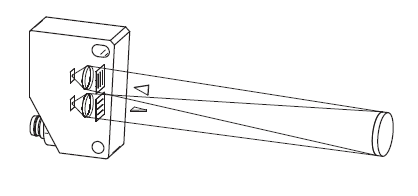
With the run time measurement method distances are measured indirectly by measuring the time required by a signal to travel the length of the range to be covered. This translates into the real world as follows: a sender unit is emitting a burst signal which, when reflected by an object, is picked up by the sensor's receiver. The sensor's electronics evaluates the time elapsed and/or the phase-shift encountered which is then converted into distance information. By applying the run time technology objects can be detected precisely and reliably even at long distances.
Multi-spot light section sensors
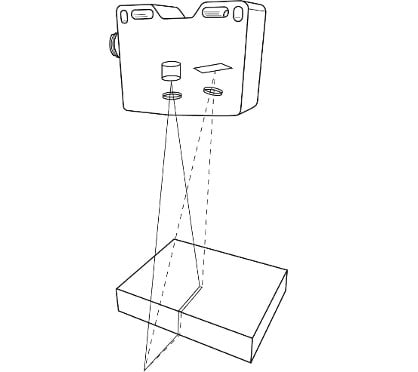
The innovative multi-spot measuring principle by Baumer is based on light section technology. Up to 600 measuring values of an object are determined per measurement in the sensor, and from these values the distance is calculated using the intelligent evaluation process. Thanks to its resolution of up to 2 µm at a measuring frequency of 500 Hz, the sensor offers stable and precise measurement results.
Products: Edge and height sensors
